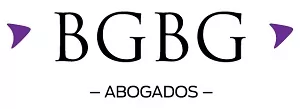On March 21, 2019, the General Provisions referred to in article 115 of the Credit Institutions Act, in relation to 87-d and95-bis of the General Law for Ancillary Organizations, applicable to the Multiple Purpose Financial Institutions, were published in the Official Federal Gazette. Henceforth referred to indistinctly, as the "Provision" or the "Provisions". 1
The central theme of these Provisions refers to the possibility of providing financial services through new technologies, provided for in the Law to Regulate Financial Technology Institutions and its secondary provisions. This is so that the Multiple Purpose Financial Institutions, henceforth indistinctly, "SOFOM" or "SOFOMs", as they are known in Spanish, may comply with their obligations regarding the prevention of money laundering and financing of terrorism through electronic means.
The central theme of these Provisions refers to the possibility of providing financial services through new technologies, provided for in the Law to Regulate Financial Technology Institutions and its secondary provisions. This is so that the Multiple Purpose Financial Institutions, henceforth indistinctly, "SOFOM" or "SOFOMs", as they are known in Spanish, may comply with their obligations regarding the prevention of money laundering and financing of terrorism through electronic means.
File and Registry. Set of data and documents that are kept or stored in printed, electronic, or optical format, or by means of in any other technology, provided that, the information has been kept intact and unaltered from the moment in which it was generated for the first time in its final form, and is accessible for further consultation, with the purpose of integrating, preserving and evidencing the operations of the entities.
Device. The equipment that allows access to the global network called the Internet, and which can be used to enter into agreements and carry out transactions.
Electronic Signature. The electronic features or data consigned in a Data Message or attached, or logically associated, to it by any technology, which are used to identify the subscriber or originator of the instruction of any transaction or financial service and indicate that the signer approves the information contained in the Data Message, and that produces the same legal effects as an autographed signature.
Geolocation. The geographic coordinates of latitude and longitude which indicate the location of the Device.
Technological Infrastructure. Computer equipment, data processing and communications facilities, communications equipment and networks, operating systems, databases, applications and systems that entities use to support their operations.
Data Message. The information generated, sent, received or filed by electronic, optical or any other technological means, in accordance with the Commercial Code.
New Model. Those models that, for the provision of financial services, use tools or technological means with methods different from those existing in the market at the moment in which the temporary authorization referred to in the Law to Regulate the Financial Technology Institutions is granted.
Terms and Conditions. The legal bases and statements that entities establish with their clients through computer applications, interfaces, Internet pages or any other means of electronic or digital communication in a format established by the Entity for the execution of Transactions, activities or services.
Also, there is an obligation to ensure that all simple copies of documents collected for filing must be legible.
Likewise, Provision 4 Ter is added, which refers to additional data that must be collected from people who remotely enter into an agreement through Devices with clients who are individuals of Mexican or foreign nationality.
The aforementioned Provision gives rise to Exhibit 2, which establishes the data, means and procedures that, prior authorization of the National Banking and Securities Commission, should be considered in order to collect information face-to-face, in the event that a SOFOM enters into credit agreements through Devices, for amounts less than 60,000 UDIS ($376,680 Pesos)2 and that do not have a real-estate property guaranty. The foregoing applies to agreements with Mexican clients who are individuals with or without business activity.
As previously mentioned, Exhibit 2 establishes the mechanisms to verify the data and documents that potential clients must provide to prove their identity, an obligation that has been added in Provision 13 Ter This verification may be made after the conclusion of the agreement in question, in the case of clients with a low risk level.
For transactions carried out remotely manner, the geolocation of the device where said transaction is carried out must be considered in order to determine the client's transactional profile.
It is important to mention that throughout the document that sets forth the reforms, obligations are established that may be carried out remotely through digital or electronic means, which must contain the consent referred to in Exhibit 2 of the Provisions, such as questionnaires applicable to customers who have been classified as high risk.
On the other hand, Provision 10 Ter provides for the suspension of the identification process of a potential client or user, when there is a reasonable probability of the existence of risks according to the criteria established in a SOFOMs related manual, which may be related to illegal behavior, or goods assets that are related to illegal activities. The foregoing would generate the obligation of preparing a 24-hour unusual transaction report of 24 hours.
Liable parties must include in their Compliance Manual, or in some other document or manual, the mechanisms on the basis of which the background and purposes of those transactions that, according to the Provisions, should be presented to the committee for their examination as unusual transactions, the result of which that must be recorded in writing.
Additionally, the following obligations were added to the chapter referring to automated systems:
An exception to preparing the report referred to in Provision 10 Ter, referred to in previous lines, which must be generated manually.
Facilitate the verification of the data and documents provided remotely by the client.
Finally, Chapter XII Bis is added, which refers to New Models, in which the requirements are established for liable parties that intend to carry out SOFOM transactions through New Models.
[1] https://www.dof.gob.mx/nota_detalle.php?codigo=5554779&fecha=21/03/2019 [2] Value in pesos of UDI as of April 25, 2019: $6.2780The content of this article is intended to provide a general guide to the subject matter. Specialist advice should be sought about your specific circumstances.


